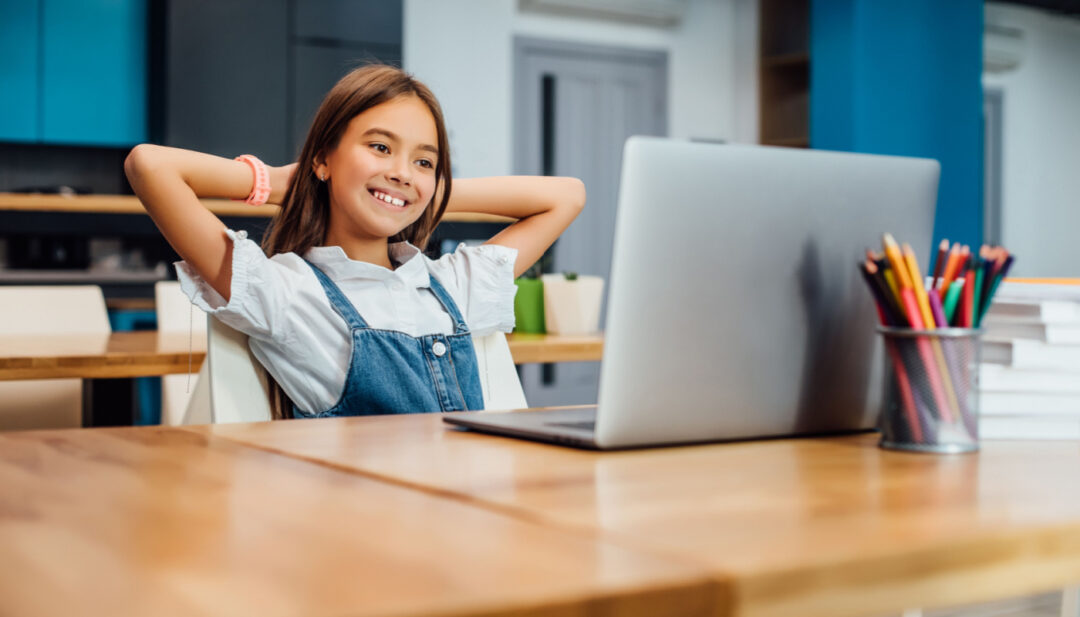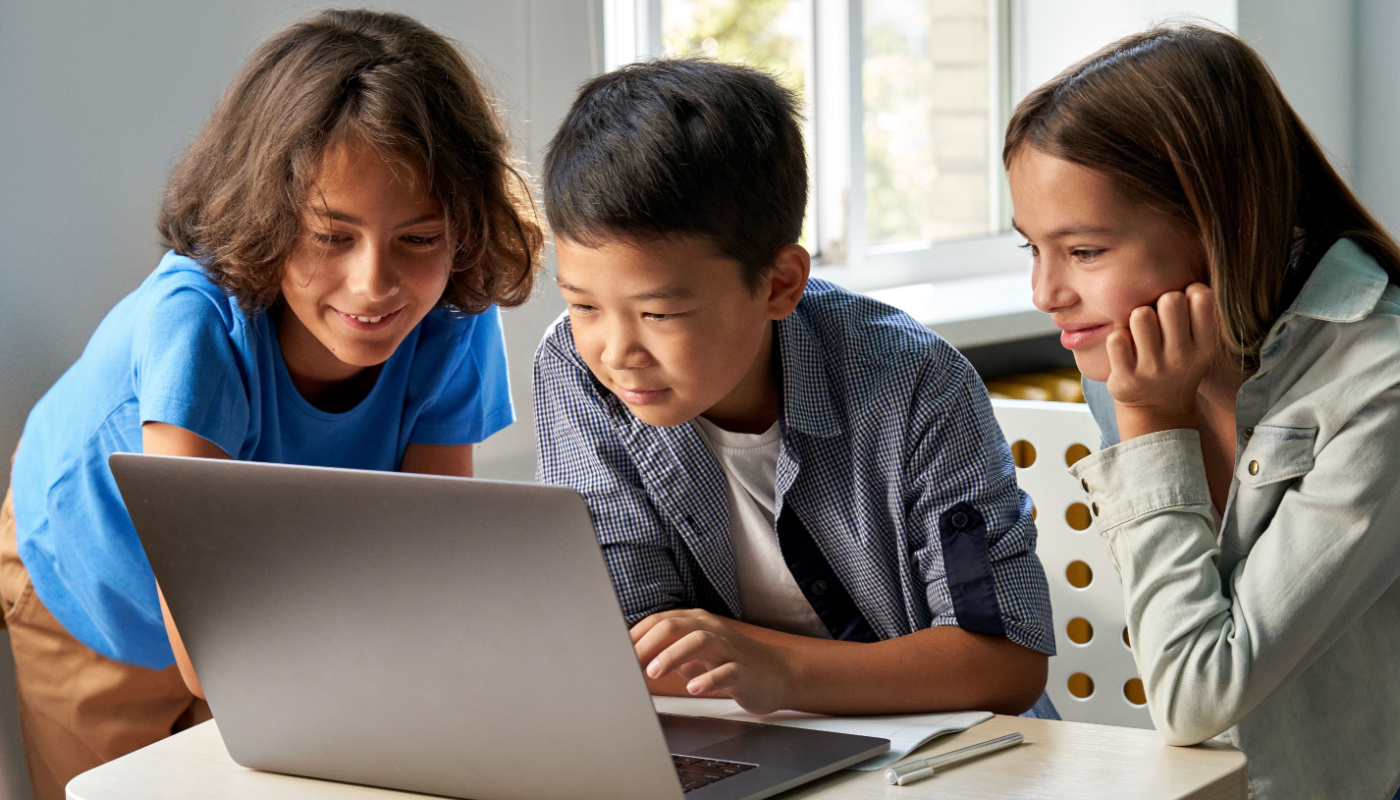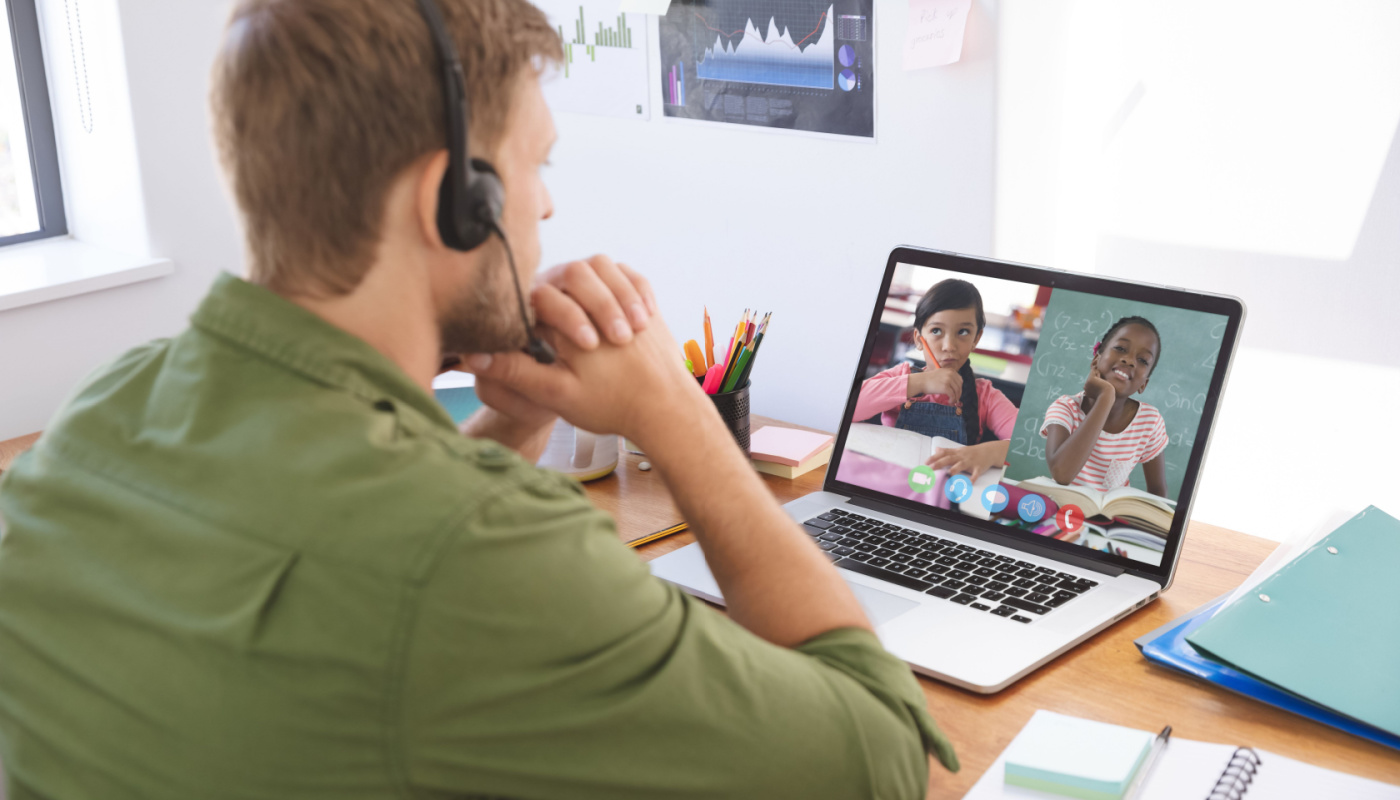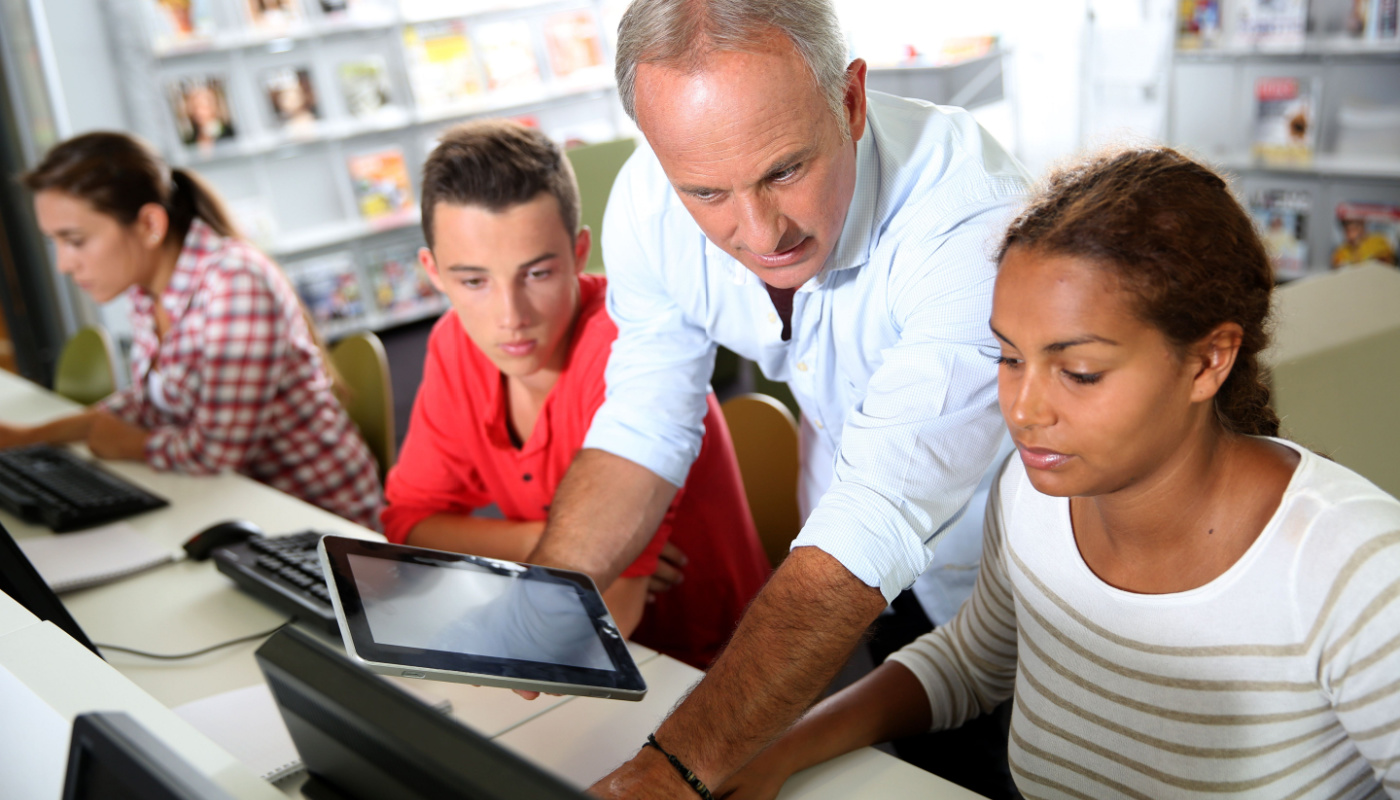
The use of flipped learning has increased significantly in recent years. When schools shut down because of the COVID-19 pandemic, some teachers and students thrived in a flipped setting. As in-person learning returned, some teachers brought the flipped classroom with them.
Flipped learning can be a useful tool for students who are still remote — especially if they learn alongside in-person students. However, there are some drawbacks and limitations to this style which can impact your lesson plans and student success rates. Learn more about the flipped classroom and how it can be applied to your curriculum.
Understanding the Flipped Classroom
The premise of the flipped classroom is simple: students listen to recordings or watch lectures when they are at home and complete their homework when they are in school. Teachers create these recordings ahead of time and then use their class time to help students and answer any questions they have about the material.
“As opposed to the traditional classroom, where the teacher takes the center imparting new information to students who passively absorb it, the flipped classroom technique focuses on providing students with learning material,” says Amanda Athuraliya at Creately. “This method requires students to familiarize themselves with the new information and prepare for in-class activities with the teacher and peers, ahead of time.”
Proponents of flipped learning say that this process is ideal for large classrooms with students who are learning at different levels. In a standard lecture, a student might miss a key concept and then will have to review it on their own. With a flipped classroom, students can pause and rewind lectures to better understand them.
“The flipped classroom method promotes independent and student-led thinking rather than a reliance on the teacher’s instruction,” says Graham Glass, CEO of Cypher Learning. “Lesson time therefore becomes a space for group discussion and collaboration, freeing up time for specific queries and talking through their work with the teacher.”
In theory, students can take ownership of their education. They can ask questions if there was anything they didn’t understand from the recordings and can focus on concepts that are relevant to them.
“A flipped classroom provides students with increased interaction with one another and with an instructor,” writes Shannon Maxwell at enterprise video platform YuJa. “This can enable improved understanding and engagement for students, as well as improved attendance.”
Instead of attending lectures, students can use their class time to discuss concepts with peers, complete projects, and gain a better understanding of the assignments. This makes attending class fun while giving students the ability to speak up and move around.

Drawbacks of the Flipped Classroom
Despite the popularity of this teaching method, there are some limitations to implementing a flipped classroom. First, it relies heavily on students actually watching the lectures and understanding them in a meaningful way before the class period. Not all students will do this.
John Hattie, an emeritus laureate professor at the University of Melbourne, recently co-authored a study on the flipped classroom. He and his fellow researchers found how few teachers actually track whether students watch the videos or actively pay attention to them. Many students leave them on in the background while they do other things or watch them at double speed. Then they arrive to class unprepared and have to learn the material during the discussion.
Some people have concerns that the students who do pay careful attention to the videos aren’t the ones who really need to be watching them. Students who don’t do their homework won’t be prepared in class and will keep falling behind as long as they ignore the videos.
However, others believe that self-regulation is a big part of growing up. This method can teach students that they are missing out during classroom activities, which can increase their chances of watching the content.
“While you may think that this approach works only with more responsible students, it will help your class group develop a sense of duty to their tasks and take full control of their learning process,” writes the team at Acer for Education.
This model also relies somewhat on the economic or financial privilege of the students involved. Learners will need to be able to stream video at home, either through a computer, tablet, or smartphone. “Many have criticized the model’s reliance on increased screen use and access to technology that some families don’t have,” says Maddie Martin at Thinkific.
Fortunately, this isn’t a major concern with remote learning. If a student already has access to a computer and the internet, they can watch videos. The main remote drawback is making the classroom more engaging for non-present learners. It can be hard to lead classroom activities and projects when some of the students are logging in from home.

Flipping With Remote and Hybrid Learning
Flipped lesson plans thrived with remote learning because students had to quickly adapt to the home classroom during the pandemic. Some students sat for hours listening to lectures throughout the school day and then did homework at night. Flipped learning allowed students to watch lectures on their own time and engage with teachers and friends during class. This made the calls more enjoyable and potentially increased attendance rates.
“Online learning is an optimal environment for the flipped classroom structure, as this design method prioritizes the synchronous learning time for engaging activities that emphasize collaboration, social interaction and inclusion,” says Sandy Silk, principal cybersecurity advisor for Info-Tech Research Group.
Teachers also can take advantage of online tools to facilitate these discussions. For example, they can break students out into small groups through Zoom and then bring everyone back together at the end. Students can even talk virtually one-on-one about the assignment.
“Placing students in groups to discuss class concepts or to complete assignments helps to expose students to differing points of view,” says Chris Palazzo at peer assessment platform Kritik. “Team-based discussions may occur remotely over chats and interactive videos. This can even be done in small-group discussions.”
In the post-pandemic classroom, teachers can still follow this model. Remote students can work together in a small group of their own while their in-person counterparts also break into groups.
How Teachers Make Flipped Learning More Effective
A big part of managing a flipped classroom is addressing the drawbacks and limitations of this process. For example, if you are creating videos that students don’t watch, the problem might be the content, not your students. This is what Michael Buist, a math teacher in Arizona’s Chandler Unified School District, figured out when he started creating videos for flipped lessons.
“It became apparent that my students just weren’t in awe of these mathematical videos,” says Buist. “So, I asked them to give me some suggestions… They really wanted me to be a YouTube creator.”
His students suggested adding background music, sound effects, voiceovers and graphics to connect with the material and make it more engaging. Kids watch YouTube videos in their free time, so they essentially wanted math information in a content format they were already consuming.
“The success of the flipped classroom model depends on the quality of the resources used,” says Rachel at Rae Rocks Teaching. “When selecting video lectures or readings, make sure they are engaging, informative, and relevant to the topic.”
You also don’t have to be the one featured in these videos. It’s possible to find recordings and podcasts online that might be more engaging to your students. This can also save time in your lesson planning.
“There’s this mindset around flipped learning: that one, it has to be video; and two, that it has to be you,” says Angela Barnett, an elementary teacher in California. “My kiddos, they see me every day, 8:30 to 1:40…“I’m like, ‘Do they really need to hear my voice?’” Instead she often uses existing videos from sites like BrainPop.
When done well, students can engage with the material on their own time. They can watch your videos on the bus ride home or when they have downtime after other assignments. If the material is interesting, this content can be a break from the standard homework tasks they have each night.
“I know this can be a highly debated topic, but the research on homework shows that it doesn’t always work,” writes elementary school teacher Lori McDonald. “Students can get stuck and frustrated working on their own…In the flipped classroom, the only homework students are doing is their preparation activities.”

Implementing Your Own Flipped Classroom
Whether you are trying to accommodate remote learners or simply want to try something new, it is possible to test flipped learning with your students. It all starts with the creation (or sharing) of a video relevant to the core concepts students need to know.
“Basically, it comes down to this: if flipping instruction is intriguing to the educators teaching remotely or in a hybrid model, start by asking if a video can be created to cover this particular topic as opposed to using class time on it,” writes the team at Eduporium.
Lisa Leaheey, 2023 Rhode Island State Teacher of the Year, used the flipped method for her high school English class as an emergency plan when she was called for jury duty.
“I was about to start ‘Hamlet’ in my 12th-grade class, and I was wondering: How on earth is this going to work?” says Leaheey. “I was convinced I would get called to a jury and be gone for two weeks. I had heard about flipping; I put the whole thing together with assignments for two weeks, and the night before, jury duty got canceled.” She ran with the lesson plans anyway and continues to embrace the flipped classroom.
In other words, you don’t have to be completely dedicated to flipped classrooms. You might find some lessons that do very well with flipped learning. You can also transition to the flipped classroom model over time. Jeff Herb, the founder of Instructional Tech Talk, encourages teachers to start small with their flipped assignments. You don’t have to flip your entire curriculum at once and instead can start with one lesson or concept.
Remote learning still plays an important role in the modern classroom and is a useful alternative for students who can’t get to school in person. Consider implementing flipped lesson plans to accommodate these students and to help your in-person learners. The flipped classroom model can help students take control of their education while making school more engaging.
Images used under license from Shutterstock.com.

